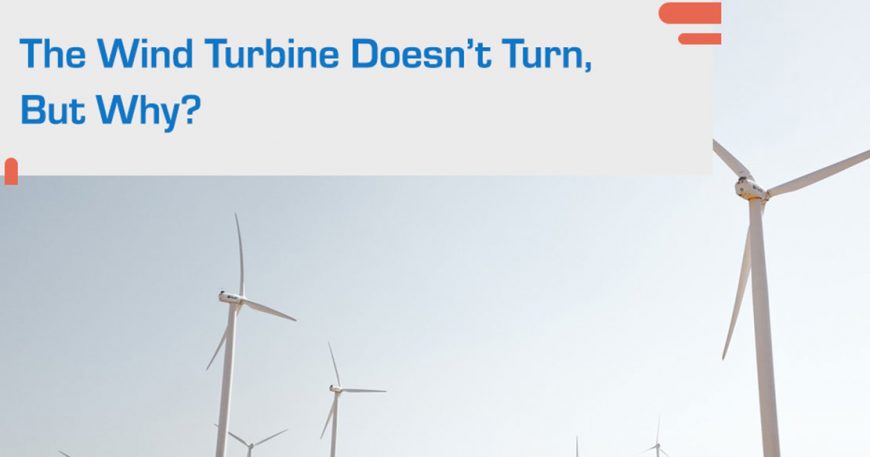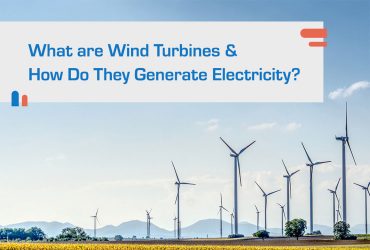As much as we would like to have a wind turbine that is constantly generating sustainable electricity supply for our buildings or communities, it is still important to recognize the cause and needs of the downtime of wind turbines. Understanding why wind turbines are not turning might help you evaluate your wind site and wind energy plan more realistically. In the end, taking a break is for accomplishing a longer journey

Wind turbine is not turning, why?
When it comes to wind turbines, people expect them to always be turning. In reality, though, that isn’t always the case. Since wind turbines generate electrical power by converting energy resulting from movement, the question arises: Isn’t it useless when a turbine doesn’t turn?
It is useless if you only take power output into consideration. In fact, downtime of wind turbines is quite normal or even necessary sometimes.
4 reasons why some wind turbines don’t turn
Generally speaking, there are 4 reasons behind the downtime of wind turbines.
1. There is no wind.
As simple as that: There is no wind to turn the turbine in the first place. Maybe the weather is uncharacteristically calm for the day. Maybe the region is experiencing seasonal breaks of wind activity. In other cases, there could be nearby buildings or obstacles that are blocking most of the incoming wind.
Environmental factors like these significantly decide how much wind resource a wind turbine is able to receive and therefore how frequently the wind turbine turns. A wind turbine designed to generate a certain amount of power output in optimal conditions might not have the environmental support to operate with its full capacity at all times. This difference between optimal and realistic performance due to external influences is reflected in the wind turbine’s “capacity factor.”
Needless to say, if the wind turbine stands still too often, it might be an indication that the chosen spot for the turbine is less than ideal.
2. There is wind but the wind speed is too low.
Wind turbines can only start turning when the wind is strong enough. The “start-off wind speed,” or “cut-in wind speed.” of a wind turbine defines the basic wind speed for the turbine to start turning. It tells you, from which wind speed onward, the wind surmounts the mechanical resistance of the turbine and starts generating bits of electricity. This speed varies from turbine to turbine depending on blade size, shape, angle, mechanical transmission, generator, and quality maintenance.
As the level of wind speed strongly decides the amount of electrical power generated, the power output of a wind turbine at low wind speeds would only reach a fraction of its power capacity, or even be somewhat insignificant. Even so, it is still producing electricity. Therefore, it is always beneficial when a wind turbine is designed to have a start-off wind speed that is as low as possible. This way, it reduces the time where the wind turbine fails to utilize incoming wind and ends up standing still.
For some of the larger turbines that have an enormous angular momentum of the rotor, it is a whole other case. The start-off wind speed for these turbines can be so high that letting the turbine start its operation naturally becomes a waste of existing wind resources. Therefore, they often use an electric engine to kickstart the rotation of the blades and then start harvesting the energy of low-speed wind instead of waiting for strong enough winds to start its operation.
3. The wind is too strong.
Wind turbines need enough wind to operate, but too much wind is also not helpful. Wind turbines can only operate safely up to a certain wind speed, which is called the “cut-off wind speed” or “cut-out wind speed.” Any wind stronger than the limit becomes too much for the mechanism to handle and poses risks to both the machine and people.
To avoid such risk of overloading, most of the wind turbines and wind turbine generators are equipped with built-in sensors and breaks. These tools evaluate the endurance of the wind turbine to the current wind speed and decide when to shut down the operation.
In some cases, the blades of the wind turbine are orientated to angles where they can’t pick up incoming wind anymore. In other cases, the generator detaches itself from the rotation of the blades. While the blades still rotate with strong wind, the generator shuts down and stops operating to avoid overloading.
4. The turbine is under maintenance.
Since it is almost impossible to conduct maintenance work to a wind turbine while it operates, wind turbines must be shut down during scheduled maintenance or repair. Regular maintenance can ensure a wind turbine’s wear and tear are taken care of to avoid sudden malfunction or emergency fails.
A wind turbine needs to be maintained a number of times per year depending on how old the wind turbine is and under what weather condition it normally operates. Each maintenance process also can last from a few hours to a few days. This is reflected in the wind turbine’s “availability”, which means the time when a wind turbine is ready to operate. When the availability of a wind turbine is 90% throughout the year, it indicates that 10% of the time, the wind turbine is not able to operate even when there is wind. Availability, in turns, affects the wind turbine’s overall power output performance.
It’s okay if the wind turbines don’t always turn
Related Content
The energy transition has already reached urban areas. In addition to solar modules on roofs and green façades, small wind turbines are increasingly being considered...
Since centuries ago, humans have learned to utilize wind power for activities ranging from everyday tasks like grinding grains to long-distance traveling such as sailing....

